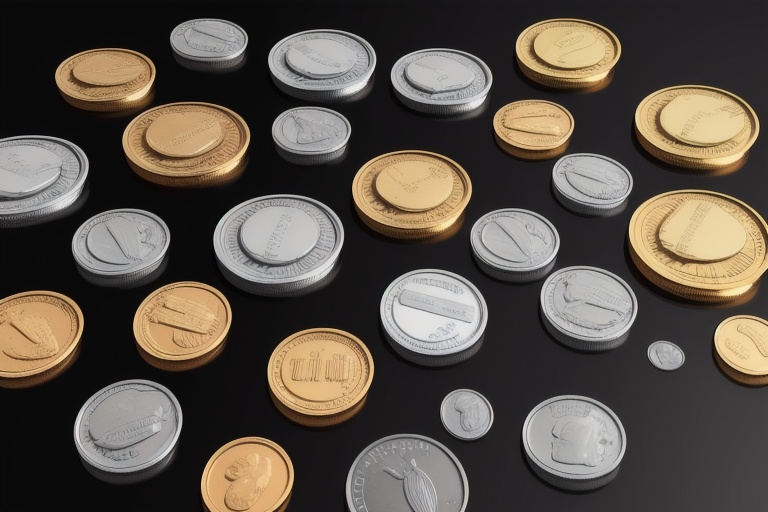The Kennedy half dollar, a coin with a face value of just 50 cents, can represent a treasure trove of historical and financial interest for collectors and enthusiasts. Since their introduction in 1964, these coins have not only served as a tribute to the memory of President John F. Kennedy but have become a cornerstone for many coin collections due to their unique qualities and potential worth. In this comprehensive guide, we shall delve into the intricacies of Kennedy half dollar values, examining key dates, and providing an insight into the factors that influence their market prices. Whether you're an experienced numismatist or new to the hobby, understanding these coins is invaluable.
The Kennedy half dollar, a coin with a face value of just 50 cents, can represent a treasure trove of historical and financial interest for collectors and enthusiasts. Since their introduction in 1964, these coins have not only served as a tribute to the memory of President John F. Kennedy but have become a cornerstone for many coin collections due to their unique qualities and potential worth. In this comprehensive guide, we shall delve into the intricacies of Kennedy half dollar values, examining key dates, and providing an insight into the factors that influence their market prices. Whether you're an experienced numismatist or new to the hobby, understanding these coins is invaluable.
The Beginning of the Kennedy Half Dollar
Kennedy half dollars first graced the United States Mint in 1964, initiated as a move to honor President Kennedy after his assassination in 1963. The swift introduction of this coin was a testament to the nation's affection and respect for the late president. Originally composed of 90% silver and 10% copper, these early issues carry a distinct intrinsic value due to their silver content in addition to their numismatic appeal.
Evaluating Coin Value: The Importance of Condition and Rarity
Coin values are predominantly influenced by condition and rarity. Kennedy half dollars are no exception, and their worth can vary dramatically based on these criteria. When examining coin values, it's crucial to understand the grading scale, which ranges from Good (G), Very Good (VG), Fine (F), to Extremely Fine (EF), Almost Uncirculated (AU), through to Mint State (MS) and includes the coveted Proof (PF) grades for specially minted coins. The higher the grade on this scale, the higher the potential value of the coin.
Sought-After Special Issues and Key Dates
Among the wide spectrum of Kennedy half dollars, certain dates and mints stand out due to their low mintage, distinct features, or ties to historical events. For instance, the 2014 P Silver Proof, hailing from the Philadelphia Mint, carries a higher value in Mint State 60 (MS60) condition or better, with prices generally ranging between $25 and $30. Likewise, the 1999 S and 1996 S Silver Proofs command similar premiums due to their limited production and high collector demand.
The 1970 D, exclusively distributed in mint sets and not released for general circulation, is another notable example of a Kennedy half dollar that can hold significant value. Additionally, individual coins from 1987, both from the Philadelphia (P) and Denver (D) Mints, are also coveted due to their lower mintages and absence from circulation.
It's pertinent to note that while these key dates provide collectors with a baseline, the volatile nature of the coin market means that prices are not fixed and can fluctuate.
Understanding the Market: Prices and Predictions
Though we can provide estimates based on current trends, prices for Kennedy half dollars can change, affected by demand, the coin's state of preservation, and broader economic circumstances. For example, a 1964 P Kennedy half dollar in G-VG condition might fetch around $10, but the same coin in MS60 or better could potentially double in value.
The valuation journey continues more modernly with the 1976 S 40% silver coins, struck to commemorate the bicentennial. In Mint State condition, these distinctive coins, identifiable by the '76 date and Independence Hall reverse, can fetch upwards of $10. A 1974 D Kennedy half dollar with a doubled die obverse—a rare error—can attract collectors' interest, with Mint State examples valued at $40-$50 or more.
Keeping Informed and Engaging with the Collector Community
Whether you're a dedicated collector or someone with a budding interest in numismatics, it's vital to stay informed. Market trends, valuation updates, and news can be accessed through leading industry publications, and by engaging with the community at coin shows or through online forums and networks. These resources prove crucial in staying apprised of the ever-shifting dynamics of coin values.
For enthusiasts, the Kennedy half dollar's journey through U.S. mints and hands is both an exciting and educational pursuit. Spanning over half a century, these coins connect us with a national narrative and, while delighting in the joys of collecting, invite us to ponder the factors that underpin their value.
Undertaking the examination of Kennedy half dollars enriches one's knowledge of numismatics and facilitates a deeper appreciation for these coins, enhancing the collecting experience. This guide is but an introduction to the diverse and fascinating sphere of coin collecting and valuation, with much more to explore as we journey into the depths of this enthralling pastime. Stay connected with our blog as we continue to unravel the complexities and delights of this enduring hobby.
Information for this article was gathered from the following source.


